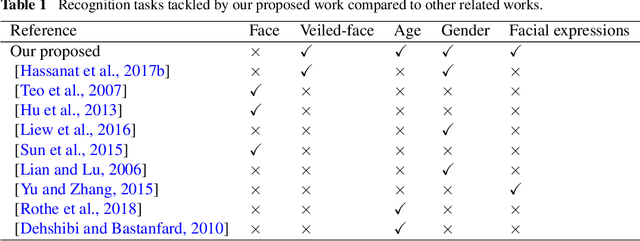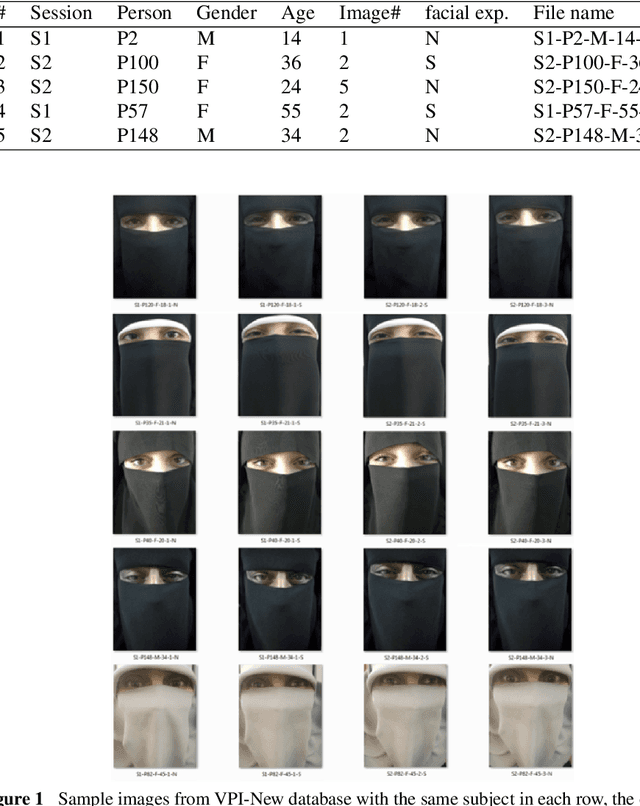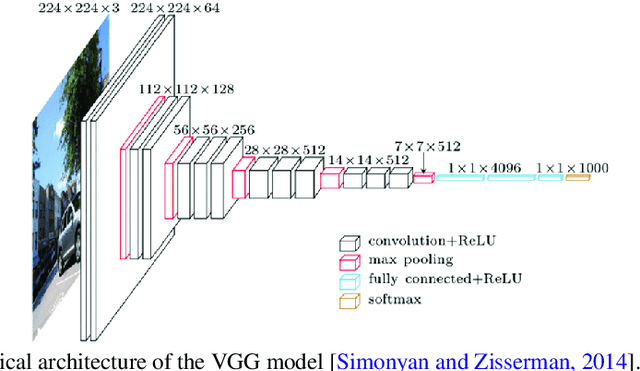V. B. Surya Prasath
Modified K-means with Cluster Assignment -- Application to COVID-19 Data
Feb 04, 2024Abstract:Text extraction is a highly subjective problem which depends on the dataset that one is working on and the kind of summarization details that needs to be extracted out. All the steps ranging from preprocessing of the data, to the choice of an optimal model for predictions, depends on the problem and the corpus at hand. In this paper, we describe a text extraction model where the aim is to extract word specified information relating to the semantics such that we can get all related and meaningful information about that word in a succinct format. This model can obtain meaningful results and can augment ubiquitous search model or a normal clustering or topic modelling algorithms. By utilizing new technique called two cluster assignment technique with K-means model, we improved the ontology of the retrieved text. We further apply the vector average damping technique for flexible movement of clusters. Our experimental results on a recent corpus of Covid-19 shows that we obtain good results based on main keywords.
Federated Learning: Applications, Challenges and Future Scopes
May 18, 2022


Abstract:Federated learning (FL) is a system in which a central aggregator coordinates the efforts of multiple clients to solve machine learning problems. This setting allows training data to be dispersed in order to protect privacy. The purpose of this paper is to provide an overview of FL systems with a focus on healthcare. FL is evaluated here based on its frameworks, architectures, and applications. It is shown here that FL solves the preceding issues with a shared global deep learning (DL) model via a central aggregator server. This paper examines recent developments and provides a comprehensive list of unresolved issues, inspired by the rapid growth of FL research. In the context of FL, several privacy methods are described, including secure multiparty computation, homomorphic encryption, differential privacy, and stochastic gradient descent. Furthermore, a review of various FL classes, such as horizontal and vertical FL and federated transfer learning, is provided. FL has applications in wireless communication, service recommendation, intelligent medical diagnosis systems, and healthcare, all of which are discussed in this paper. We also present a thorough review of existing FL challenges, such as privacy protection, communication cost, system heterogeneity, and unreliable model upload, followed by future research directions.
* 28 pages, 2 figures
Deep Learning for Medical Image Registration: A Comprehensive Review
Apr 24, 2022



Abstract:Image registration is a critical component in the applications of various medical image analyses. In recent years, there has been a tremendous surge in the development of deep learning (DL)-based medical image registration models. This paper provides a comprehensive review of medical image registration. Firstly, a discussion is provided for supervised registration categories, for example, fully supervised, dual supervised, and weakly supervised registration. Next, similarity-based as well as generative adversarial network (GAN)-based registration are presented as part of unsupervised registration. Deep iterative registration is then described with emphasis on deep similarity-based and reinforcement learning-based registration. Moreover, the application areas of medical image registration are reviewed. This review focuses on monomodal and multimodal registration and associated imaging, for instance, X-ray, CT scan, ultrasound, and MRI. The existing challenges are highlighted in this review, where it is shown that a major challenge is the absence of a training dataset with known transformations. Finally, a discussion is provided on the promising future research areas in the field of DL-based medical image registration.
* 18 pages, 7 figures
Deep learning for identification and face, gender, expression recognition under constraints
Nov 02, 2021



Abstract:Biometric recognition based on the full face is an extensive research area. However, using only partially visible faces, such as in the case of veiled-persons, is a challenging task. Deep convolutional neural network (CNN) is used in this work to extract the features from veiled-person face images. We found that the sixth and the seventh fully connected layers, FC6 and FC7 respectively, in the structure of the VGG19 network provide robust features with each of these two layers containing 4096 features. The main objective of this work is to test the ability of deep learning based automated computer system to identify not only persons, but also to perform recognition of gender, age, and facial expressions such as eye smile. Our experimental results indicate that we obtain high accuracy for all the tasks. The best recorded accuracy values are up to 99.95% for identifying persons, 99.9% for gender recognition, 99.9% for age recognition and 80.9% for facial expression (eye smile) recognition.
Medical Imaging with Deep Learning for COVID- 19 Diagnosis: A Comprehensive Review
Jul 13, 2021



Abstract:The outbreak of novel coronavirus disease (COVID- 19) has claimed millions of lives and has affected all aspects of human life. This paper focuses on the application of deep learning (DL) models to medical imaging and drug discovery for managing COVID-19 disease. In this article, we detail various medical imaging-based studies such as X-rays and computed tomography (CT) images along with DL methods for classifying COVID-19 affected versus pneumonia. The applications of DL techniques to medical images are further described in terms of image localization, segmentation, registration, and classification leading to COVID-19 detection. The reviews of recent papers indicate that the highest classification accuracy of 99.80% is obtained when InstaCovNet-19 DL method is applied to an X-ray dataset of 361 COVID-19 patients, 362 pneumonia patients and 365 normal people. Furthermore, it can be seen that the best classification accuracy of 99.054% can be achieved when EDL_COVID DL method is applied to a CT image dataset of 7500 samples where COVID-19 patients, lung tumor patients and normal people are equal in number. Moreover, we illustrate the potential DL techniques in drug or vaccine discovery in combating the coronavirus. Finally, we address a number of problems, concerns and future research directions relevant to DL applications for COVID-19.
* 22 pages, 11 Figures
Distance and Similarity Measures Effect on the Performance of K-Nearest Neighbor Classifier - A Review
Aug 14, 2017



Abstract:The K-nearest neighbor (KNN) classifier is one of the simplest and most common classifiers, yet its performance competes with the most complex classifiers in the literature. The core of this classifier depends mainly on measuring the distance or similarity between the tested example and the training examples. This raises a major question about which distance measures to be used for the KNN classifier among a large number of distance and similarity measures? This review attempts to answer the previous question through evaluating the performance (measured by accuracy, precision and recall) of the KNN using a large number of distance measures, tested on a number of real world datasets, with and without adding different levels of noise. The experimental results show that the performance of KNN classifier depends significantly on the distance used, the results showed large gaps between the performances of different distances. We found that a recently proposed non-convex distance performed the best when applied on most datasets comparing to the other tested distances. In addition, the performance of the KNN degraded only about $20\%$ while the noise level reaches $90\%$, this is true for all the distances used. This means that the KNN classifier using any of the top $10$ distances tolerate noise to a certain degree. Moreover, the results show that some distances are less affected by the added noise comparing to other distances.
Validation of Tsallis Entropy In Inter-Modality Neuroimage Registration
Nov 06, 2016



Abstract:Medical image registration plays an important role in determining topographic and morphological changes for functional diagnostic and therapeutic purposes. Manual alignment and semi-automated software still have been used; however they are subjective and make specialists spend precious time. Fully automated methods are faster and user-independent, but the critical point is registration reliability. Similarity measurement using Mutual Information (MI) with Shannon entropy (MIS) is the most common automated method that is being currently applied in medical images, although more reliable algorithms have been proposed over the last decade, suggesting improvements and different entropies; such as Studholme et al, (1999), who demonstrated that the normalization of Mutual Information (NMI) provides an invariant entropy measure for 3D medical image registration. In this paper, we described a set of experiments to evaluate the applicability of Tsallis entropy in the Mutual Information (MIT) and in the Normalized Mutual Information (NMIT) as cost functions for Magnetic Resonance Imaging (MRI), Positron Emission Tomography (PET) and Computed Tomography (CT) exams registration. The effect of changing overlap in a simple image model and clinical experiments on current entropies (Entropy Correlation Coefficient - ECC, MIS and NMI) and the proposed ones (MIT and NMT) showed NMI and NMIT with Tsallis parameter close to 1 as the best options (confidence and accuracy) for CT to MRI and PET to MRI automatic neuroimaging registration.
Polyp Detection and Segmentation from Video Capsule Endoscopy: A Review
Sep 07, 2016



Abstract:Video capsule endoscopy (VCE) is used widely nowadays for visualizing the gastrointestinal (GI) tract. Capsule endoscopy exams are prescribed usually as an additional monitoring mechanism and can help in identifying polyps, bleeding, etc. To analyze the large scale video data produced by VCE exams automatic image processing, computer vision, and learning algorithms are required. Recently, automatic polyp detection algorithms have been proposed with various degrees of success. Though polyp detection in colonoscopy and other traditional endoscopy procedure based images is becoming a mature field, due to its unique imaging characteristics detecting polyps automatically in VCE is a hard problem. We review different polyp detection approaches for VCE imagery and provide systematic analysis with challenges faced by standard image processing and computer vision methods.
* Project webpage: http://goo.gl/eAUWKJ - Complete Bibliography - Compiled and Continuously Updated
Adaptive diffusion constrained total variation scheme with application to `cartoon + texture + edge' image decomposition
May 05, 2015



Abstract:We consider an image decomposition model involving a variational (minimization) problem and an evolutionary partial differential equation (PDE). We utilize a linear inhomogenuous diffusion constrained and weighted total variation (TV) scheme for image adaptive decomposition. An adaptive weight along with TV regularization splits a given image into three components representing the geometrical (cartoon), textural (small scale - microtextures), and edges (big scale - macrotextures). We study the wellposedness of the coupled variational-PDE scheme along with an efficient numerical scheme based on Chambolle's dual minimization method. We provide extensive experimental results in cartoon-texture-edges decomposition, and denoising as well compare with other related variational, coupled anisotropic diffusion PDE based methods.
Color image denoising by chromatic edges based vector valued diffusion
May 15, 2013



Abstract:In this letter we propose to denoise digital color images via an improved geometric diffusion scheme. By introducing edges detected from all three color channels into the diffusion the proposed scheme avoids color smearing artifacts. Vector valued diffusion is used to control the smoothing and the geometry of color images are taken into consideration. Color edge strength function computed from different planes is introduced and it stops the diffusion spread across chromatic edges. Experimental results indicate that the scheme achieves good denoising with edge preservation when compared to other related schemes.
 Add to Chrome
Add to Chrome Add to Firefox
Add to Firefox Add to Edge
Add to Edge